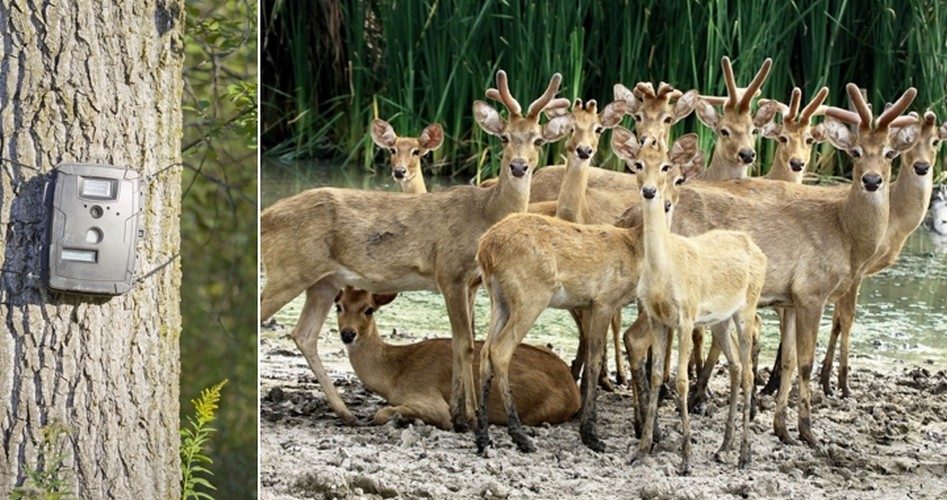
Texas has a problem. It is incumbent on the Lone Star State, along with New Mexico, Arizona, and California, to secure the nation’s southern border when federal resources fail. Of these states, Texas has the lion’s share — over 1,200 of the border’s total of nearly 2,000 miles. It is the most frequently crossed border in the world with nearly 350 million annual crossings. Protection of the border has become a political prize, with all sides claiming to have the answer, and the will, to get the job done. But Texans on the front line aren’t buying it. Take border cameras, for instance.
In Texas Governor Rick Perry’s 2006 run for re-election (Perry is the longest-running Texas governor ever, assuming the office when Governor George Bush resigned to become president in 2000), border security played a key role in his campaign. He promised an expensive and complex plan that included hundreds of additional surveillance cameras.
After several incarnations of Perry’s plan, the promised cameras didn’t materialize as expected. Fox News reported in October 2011 that the Texas Department of Public Safety (DPS) introduced “a new high-tech, low-cost camera system [that] is helping to detect illegal immigrants.” The report pictured a high-tech and very visible camera set-up, suggesting that the new system was comprised of such cameras, but also included a statement from Texas Ranger Chief Hank Whitman, “We can hide them [cameras] virtually anywhere. They are small, compact, but we move them consistently. There’s no sense trying to look for them because you’re not going to find them.”
Whitman’s remark, however, was inconsistent with the camera setup shown in the news report; the highly visible surveillance camera shown is not small, or compact, or hidden. It turns out that the cameras Whitman is referring to are not those represented, but simple wildlife cameras.
Indeed, the use of wildlife cameras was confirmed in a DPS news release a few weeks ago. On October 11, 2012, Texas Department of Agriculture Commissioner Todd Staples announced a $225,000 grant to Texas DPS for the addition of more cameras on the border. And the DPS website has changed to reflect the border security program, renamed Operation Drawbridge, that includes the use of modified wildlife cameras as the camera of choice for Texas’ border needs.
But analysts have noted a worrisome aspect of using deer cameras instead of a higher-tech system, observing that wildlife cameras have a very limited use.
“What’s different about these cameras is that there’s not a live video stream that must be constantly monitored,” reported Kris Gutierrez, FoxNews correspondent in Austin, Texas. “These cameras only go off when something triggers the sensor, and, within seconds the image is sent here to a command center in Austin to determine whether it is illegal activity.”
Gutierrez continued, “Once an image is verified, an e-mail alert is sent to the Border Patrol and local authorities working along the border.” Experts are quick to note the fatal, worrisome flaw in this system. The current system delivers only a still image, via e-mail. There is no way to verify that a person or object in a photo, and noted in an e-mail alert to a Border Patrol agent, is the same person the agent will attempt to apprehend. Without a live video stream, the legally required chain of evidence is broken. And these wildlife cameras rely on cell signals to transmit the still images. While it is illegal in America to jam cell signals, sophisticated Mexican cartels and traffickers on the border where the cameras are located do not observe the law.
Add to that the revelation of camera locations. In the Fox report, a specific South Texas ranch was identified as a location for camera placement. Observers say, not surprisingly, that revealing the location of cameras, such as the Fox report did, defeats the purpose of the system — the premise being that the system works only if illegal crossers don’t know where the cameras are.
In other words, the reliability of the system is shaky: It is too easily defeated.
If this information isn’t troublesome enough, critics are alarmed that Operation Drawbridge is monitored by a fusion center. The New American recently reported on the ineffectiveness of fusion centers, and according to writer Jack Kenny, “There are issues of civil liberties involved in the practice of spying.” Indeed, fusion centers are indicative only of an apparent consolidation of policing responsibilities away from local authorities, such as border sheriffs are witnessing. The merging of law enforcement into regional agencies is a very real danger indeed.
In fact, Texas border sheriffs have been removed almost altogether from the business of protecting Texas border counties. In Texas, border protection duties have all been consolidated under the authority of the Texas Department of Public Safety. The Department of Agriculture release confirms that “the cameras involved in Operation Drawbridge are monitored 24 hours a day, seven days a week by the Texas Fusion Center, Texas Border Security Operations Center, DPS Communications and U.S. Border Patrol.” But U.S. Border Patrol is notoriously undermanned, and promises to put enough boots on the ground haven’t come to pass.
Considering the extreme importance of border security, critics have noted the questionable decision to rely on an inferior camera system to monitor Texas’ critical border needs.
The New American attempted to contact the Texas DPS, but our calls were not returned.
Photos: Black Trail Cam camera on Poplar Tree capturing wildlife such as deer as they walk by and A group of deer looking camera via Shutterstock



